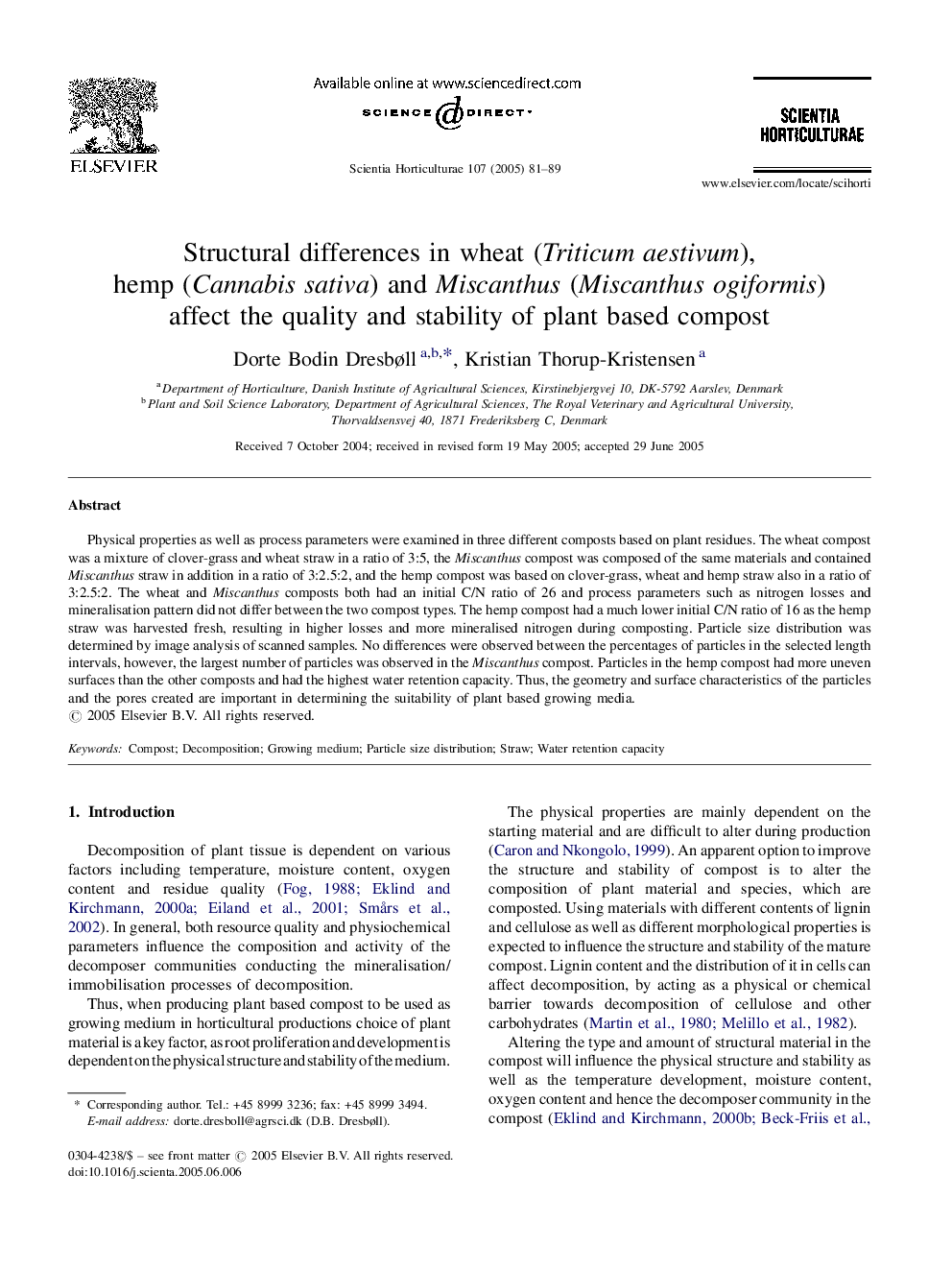| Article ID | Journal | Published Year | Pages | File Type |
|---|---|---|---|---|
| 9488769 | Scientia Horticulturae | 2005 | 9 Pages |
Abstract
Physical properties as well as process parameters were examined in three different composts based on plant residues. The wheat compost was a mixture of clover-grass and wheat straw in a ratio of 3:5, the Miscanthus compost was composed of the same materials and contained Miscanthus straw in addition in a ratio of 3:2.5:2, and the hemp compost was based on clover-grass, wheat and hemp straw also in a ratio of 3:2.5:2. The wheat and Miscanthus composts both had an initial C/N ratio of 26 and process parameters such as nitrogen losses and mineralisation pattern did not differ between the two compost types. The hemp compost had a much lower initial C/N ratio of 16 as the hemp straw was harvested fresh, resulting in higher losses and more mineralised nitrogen during composting. Particle size distribution was determined by image analysis of scanned samples. No differences were observed between the percentages of particles in the selected length intervals, however, the largest number of particles was observed in the Miscanthus compost. Particles in the hemp compost had more uneven surfaces than the other composts and had the highest water retention capacity. Thus, the geometry and surface characteristics of the particles and the pores created are important in determining the suitability of plant based growing media.
Related Topics
Life Sciences
Agricultural and Biological Sciences
Horticulture
Authors
Dorte Bodin Dresbøll, Kristian Thorup-Kristensen,
